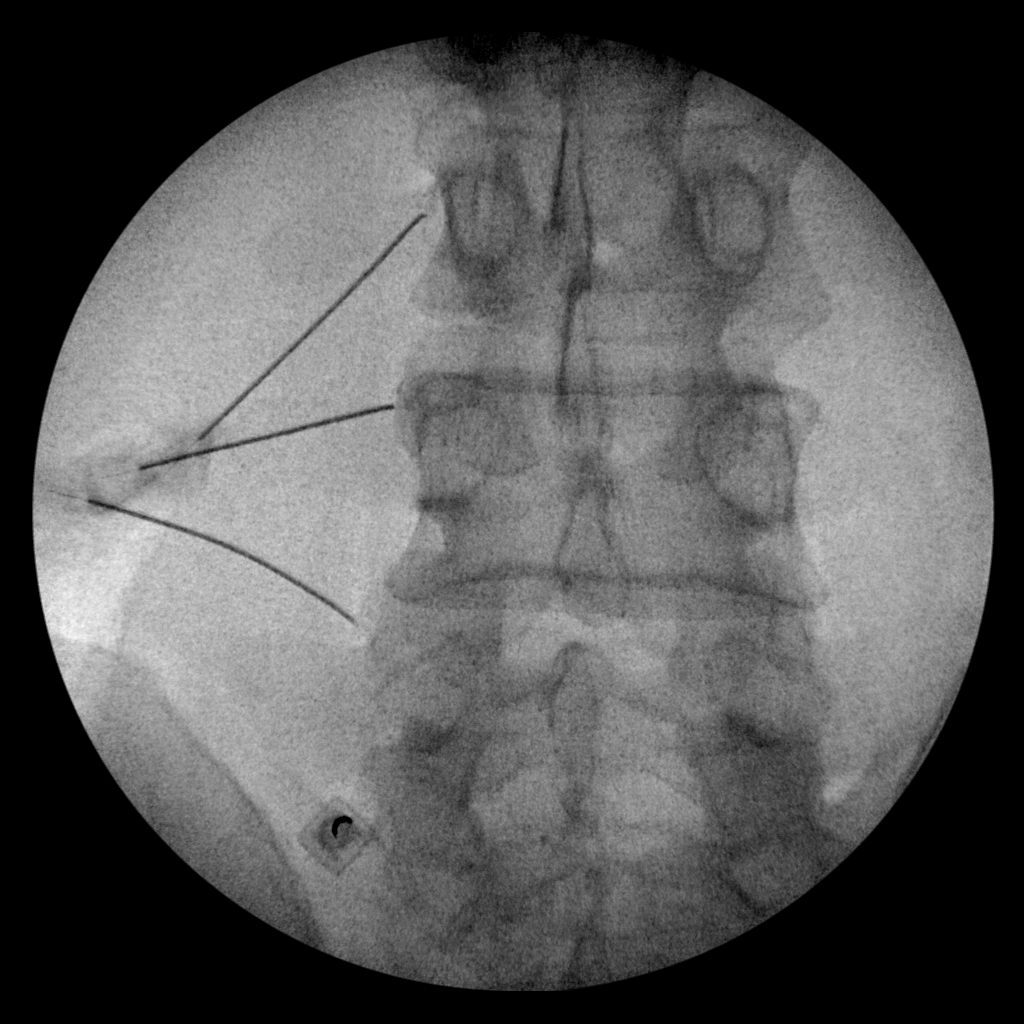Lumbar: Low back
Medial Branch: Nerves that tell the joint it has pain from arthritis/whiplash
Frequency: Usually performed on one side in at least 4 different levels. This is normally done on your most painful side as there are times that one side of your back is causing you to have pain on both sides of your back. This is performed at least once and possibly twice to confirm that your pain is coming from the joints in your low back.
Anesthetic: Local
Indications:
The second leading cause of mechanical low back pain is arthritis in your joints of your lower back. This condition is typically not fixed by surgery. All pain is transmitted by nerves. By numbing certain nerves in your spine, you can determine which specific nerves are causing the pain you have. This can help diagnose where your pain is coming from so that treatment can be directed at the cause of your pain.
Medial branch nerves carry the pain signals to the joint. By numbing these nerves, this injection is used to diagnose if your pain is coming from the arthritic joints in your low back. In most cases, this will not give you long term relief but is necessary to determine if you would be a candidate for a procedure that can give you prolonged relief, on average 6 months. Usually for low back pain that can radiate to buttocks/hips and sometimes to knees but usually not helpful for pain below the knees.
Contraindications/Reasons why you may not have your injection today:
- Bleeding disorders/low platelet counts
- Medications that thin your blood (please review this section)
- Current infection
- No driver
- Your symptoms have changed and/or improved
- Patient refusal
- Procedure not approved by your insurance
- Poorly controlled high blood pressure that may be giving you symptoms
- Allergies to the any of the medications that is being used
Potential side effects/risks of the procedure:
- Increased pain
- Numbness in lower extremities that is short lived
- Infection
- Bleeding
- Allergic reaction to medications used to clean your skin and/or medications injected
- Seizures
- Stroke
- Nerve and/or spinal cord injury
Procedure:
During the procedure, you will be lying on your stomach. An x-ray machine is used to locate the specific level of the spine which is believed to be causing your pain based upon where you hurt in your low back. After your skin is cleaned with an antiseptic solution, normally betadine unless you are allergic, a series of x-rays will be taken to guide the needle placement. The skin is localized with a local anesthetic which is typically the most painful part of the procedure as this medicine has a tendency to burn when it is injected. Another needle is then placed through the numb area of your skin and guided by the x-ray machine to the location of where the nerve sits. This is done several more times in your low back. After all needles are in place, additional local anesthestic is placed on the nerves and the needles are then removed. You may experience increased pressure in your low back/buttocks region which is normal. At times, you may even feel pressure/increased pain down the legs. That is normal, however, if at any time the pain is too intense during the injection, please tell your physician to slow down your injection. After the medication is injected, the needles are removed and the procedure is completed.
Typical length of the procedure:
10 minutes. Expect to be at the clinic no more than 15 minutes after you have been checked in by the medical assistant into the preoperative area. If this is your first time at our clinic, you will likely be at the clinic for at least one hour. Please plan accordingly.
How long do you expect pain relief:
Remember, this is purely a diagnostic procedure so your pain relief will likely not last for more than a day. The area that is normally painful to you may feel numb. If the nerves are the reason why you hurt, this is to be expected. You will receive a pain diary to keep track of your pain for the remainder of the day to make sure that your normal pain has improved by at least 50%. Please disregard pain from the injection itself and/or any muscular spasms that can result from the procedure itself. If you do have relief, you may be a candidate for lumbar radiofrequency denervation of these nerves so that you will have the same pain relief for, on average, 6 months.
